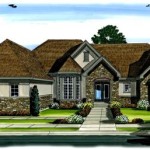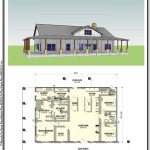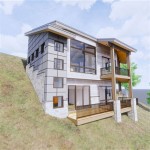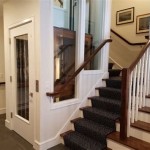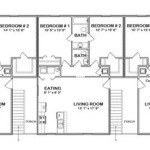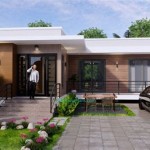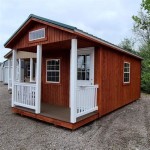Energy Efficient Home Design Plans
As the world becomes increasingly aware of the environmental impact of our actions, the demand for energy-efficient homes has grown exponentially. These homes are not only better for the planet, but they can also save homeowners money on their energy bills. If you're planning to build a new home, or remodel your existing one, consider incorporating some of these energy-efficient design features.
1. Orientation and Passive Solar Design
One of the most important factors in energy-efficient home design is the orientation of the house. The goal is to maximize exposure to sunlight in the winter months and minimize it in the summer months. This can be achieved by placing the house on an east-west axis, with the long sides facing south and north. Windows should be placed on the south side of the house, where they can take advantage of the sun's warmth. Overhangs can be used to shade windows from the sun during the summer months.
2. Insulation
Insulation is one of the most effective ways to reduce heat loss in a home. It can be installed in the walls, ceiling, and floor. The type of insulation you choose will depend on your climate and budget. Fiberglass insulation is a good choice for most climates, while cellulose insulation is a good choice for cold climates. Spray foam insulation is the most expensive option, but it is also the most effective.
3. Windows and Doors
Windows and doors are another important source of heat loss in a home. Look for windows and doors that are Energy Star rated. These windows and doors meet strict energy efficiency standards set by the government. Double- or triple-glazed windows are more energy-efficient than single-glazed windows. Doors should be weatherstripped and have a tight seal.
4. Heating and Cooling Systems
The heating and cooling system is responsible for a significant portion of a home's energy use. Choose a system that is energy efficient and right-sized for your home. Heat pumps are a good choice for both heating and cooling. They are more efficient than traditional furnaces and air conditioners. Geothermal heat pumps use the earth's constant temperature to heat and cool your home. They are the most efficient type of heating and cooling system available.
5. Renewable Energy Sources
Renewable energy sources, such as solar panels and wind turbines, can be used to offset the energy consumption of a home. Solar panels convert sunlight into electricity, which can be used to power your home or sell back to the grid. Wind turbines generate electricity from the wind. The amount of renewable energy that you can generate will depend on your location and the size of your system.
6. Water Conservation
Water conservation is an important part of energy efficiency. Low-flow toilets and showerheads can help you to reduce your water consumption. Rainwater harvesting systems can be used to collect and use rainwater for irrigation or other non-potable purposes. This can help to reduce your water bills and your environmental impact.
By incorporating these energy-efficient design features into your home, you can save money on your energy bills and reduce your environmental impact. Energy-efficient homes are more comfortable, healthier, and more durable than traditional homes. If you're planning to build a new home, or remodel your existing one, consider incorporating some of these features into your design.

Eco Design Energy Efficient Homes Greenmatch Co

Energy Efficient Home Design Plans Cad Pro

Sustainable Building In 2024 Energy Efficient Kit Homes

Cool Energy Efficient Concrete House Plans Houseplans Blog Com

Energy Efficient House Design

Net Zero Home Design Popular Plans Energy

Cool Energy Efficient Concrete House Plans Houseplans Blog Com

Energy Efficient House Plans Developed By The Architects

21 Green Homes Energy Efficient Home Designs Ideas House Plans Design

Dpe House Design Studio Energy Efficient S

